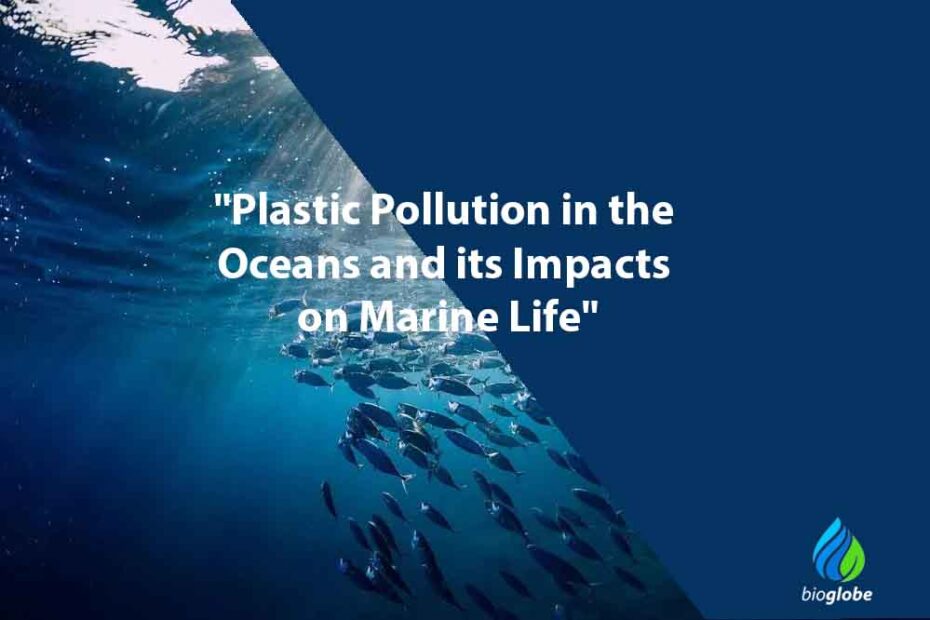This article focuses specifically on the issue of plastic pollution in the oceans and its significant impacts on marine organisms.
Introduction
The world’s oceans, covering more than 70% of our planet, are home to a diverse array of marine life. However, in recent decades, these magnificent bodies of water have become increasingly threatened by a pervasive problem: plastic pollution. The accumulation of plastic waste in our oceans has reached alarming levels, wreaking havoc on marine ecosystems and endangering the very species that rely on them. In this blog post, we will delve into the concerning issue of plastic pollution in the oceans and explore its profound impacts on marine life.
The Scale of the Problem
Plastic pollution is a global crisis, with an estimated 8 million metric tons of plastic entering our oceans every year. This staggering amount of waste poses a grave threat to marine life at all levels of the food chain. The primary contributors to this pollution are single-use plastics, such as bottles, bags, and packaging, which are irresponsibly discarded and end up in our waterways. Over time, these plastics break down into smaller pieces known as microplastics, further exacerbating the problem and making it even more challenging to tackle.
Impacts on Marine Species
Marine life, from the smallest plankton to the largest whales, is facing dire consequences due to plastic pollution. Sea turtles, for instance, often mistake plastic bags for jellyfish and ingest them, leading to internal blockages and suffocation. Seabirds become entangled in fishing lines and other plastic debris, preventing them from flying or feeding properly. Many marine mammals, including seals and dolphins, also fall victim to entanglement or suffer from ingestion of plastics, resulting in injury, starvation, or even death.
The effects of plastic pollution go beyond entanglement and ingestion. Microplastics, which are tiny fragments of plastic less than 5mm in size, are ingested by a wide range of marine organisms, including filter-feeding animals like zooplankton and bivalves. As these microplastics move up the food chain, they accumulate in larger predators, such as fish and marine mammals, including the ones humans consume. This means that plastic pollution has the potential to enter our own food chain, posing a threat to human health as well.
Habitat Destruction and Ecosystem Disruption
Plastic pollution also causes habitat destruction and disrupts delicate marine ecosystems. Coral reefs, often referred to as the rainforests of the sea, suffer immensely from plastic debris. Corals are easily damaged by entangled plastics, and the presence of microplastics inhibits their growth and reproductive success. Additionally, plastic pollution can smother and damage seafloor habitats like seagrass meadows and kelp forests, reducing biodiversity and impacting the overall health of the ecosystem.
Solutions and the Way Forward
Addressing plastic pollution requires a multi-faceted approach involving individuals, governments, and the private sector. Here are some key steps we can take to combat this issue:
1. Reduce and eliminate single-use plastics: Governments and businesses must implement policies to reduce the production and consumption of single-use plastics. Encouraging the use of reusable alternatives and promoting sustainable packaging can significantly reduce plastic waste.
2. Improve waste management systems: Investing in effective waste management infrastructure, including recycling facilities and waste collection systems, is crucial. Proper disposal and recycling of plastic waste can prevent it from ending up in our oceans.
3. Raise awareness and educate: Educating the public, particularly the younger generation, about the impacts of plastic pollution is vital. By fostering a sense of responsibility and understanding, we can encourage sustainable practices and behavioural changes that help mitigate the problem.
4. Support research and innovation: Continued research into plastic alternatives and innovative cleanup technologies can contribute to long-term solutions. By finding new ways
to recycle and repurpose plastics, we can reduce the demand for new plastic production and alleviate the burden on our oceans.
5. Encourage responsible fishing and aquaculture practices: The fishing industry plays a significant role in ocean health. Implementing responsible fishing practices, such as reducing ghost gear (abandoned fishing nets) and promoting sustainable aquaculture methods, can help prevent plastic debris from entering the oceans and protect marine life.
6. Support local and international initiatives: Many organizations and initiatives are dedicated to tackling plastic pollution in the oceans. Supporting and contributing to these efforts through donations or volunteering can make a difference. Additionally, advocating for stronger policies and regulations at the local and international levels can help drive meaningful change.
7. Engage in beach and coastal cleanups: Participating in beach cleanups and organizing community efforts to remove plastic debris from coastlines can have a direct impact on preventing plastic waste from entering the oceans. These activities also raise awareness and inspire others to take action.
Conclusion
Plastic pollution poses a significant threat to marine life and the health of our oceans. Urgent action is required to address this global crisis. By reducing single-use plastics, improving waste management systems, raising awareness, supporting research and innovation, and promoting responsible practices, we can mitigate the impacts of plastic pollution on marine ecosystems. Let us all come together to protect our oceans and the incredible marine life that calls them home. Our collective efforts today will shape a healthier and more sustainable future for generations to come.


